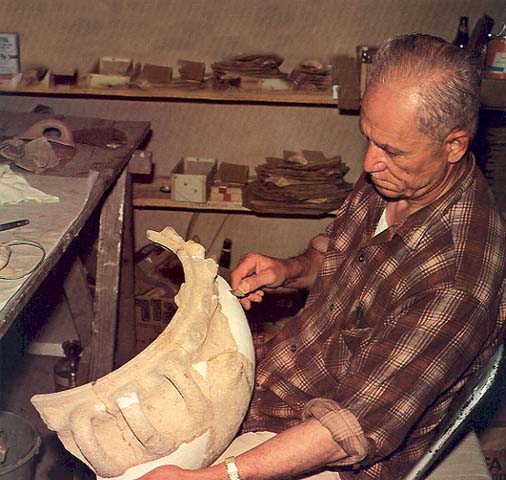Image Details

Joseph Callaway
A preservationist carefully reconstructs a multi-handled krater from pottery sherds found at Khirbet Raddana, a village north of Jerusalem. He uses plaster of paris to bridge gaps left by missing pieces. At first glance, the krater seemed typical of other 13th century B.C. kraters. But one unusual feature distinguishes it: a hollow piping which runs around the inside of the entire vessel below the lip of its everted rim. Protruding from the piping on the inside of the bowl are two bull heads (see detail). The hollow piping joins the heads in such a way that liquid can pass through the piping into the bull heads, out their mouths, and into the bowl (see drawing). The spout into which the liquid was poured is missing—as is the other half of the bowl which, in all probability, also had two bull heads.
The closest analogue to this complicated ritual vessel has been found in central Anatolia and dates to the Old Hittite Kingdom. Thus this krater is additional evidence of Hittite influence in Syria-Palestine.
